Ramayana is an ancient Indian epic poem that tells the story of Prince Rama.
Ramayana is one of the two major Sanskrit epics of ancient India, the other being the Mahabharata.
Once upon a time, in the land of Bharata (modern day Indian Subcontinent), there was a great kingdom called Ayodhya.
Rama was born as the eldest son of King Dasharatha of Ayodhya and his queen Kausalya. He grew up to be a skilled warrior, and along with his brothers Lakshmana, Bharata, and Shatrughna, was trained in various arts and sciences by the sage Vashishta. Rama married Sita, the daughter of King Janaka of Mithila, after winning her hand in a competition.
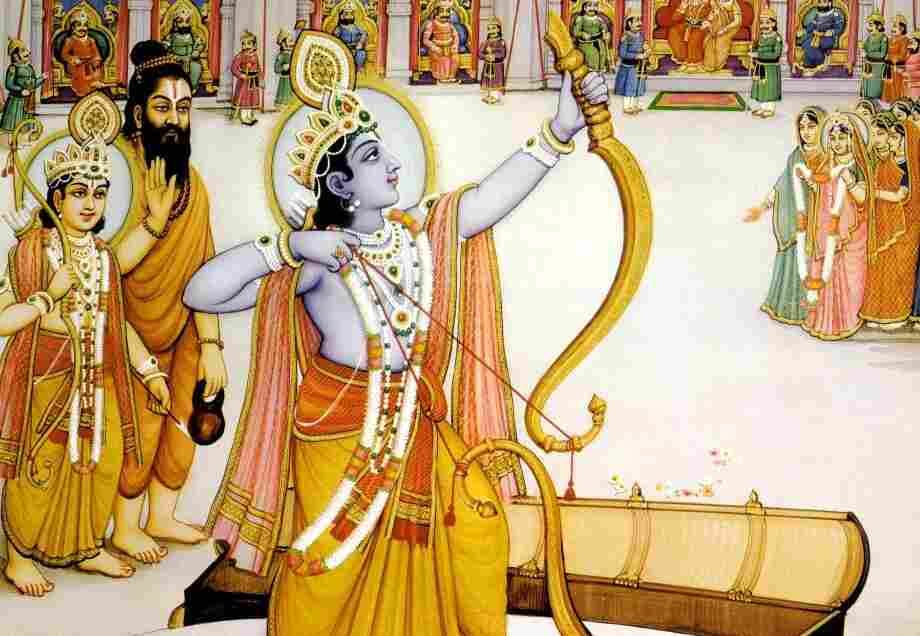
After Rama’s father Dasharatha was compelled by the promise he made to his wife Kaikeyi, Rama was exiled to the forest for fourteen years.
Read the Ramayana – see several options
Valmiki’s Ramayana: The Great Indian Epic (Amar Chitra Katha) – Illustrated Comics
Sita and Lakshmana accompanied him during his exile. In the forest, Rama faced numerous challenges and fought several rakshasas, including Surpanakha, the sister of Ravana.
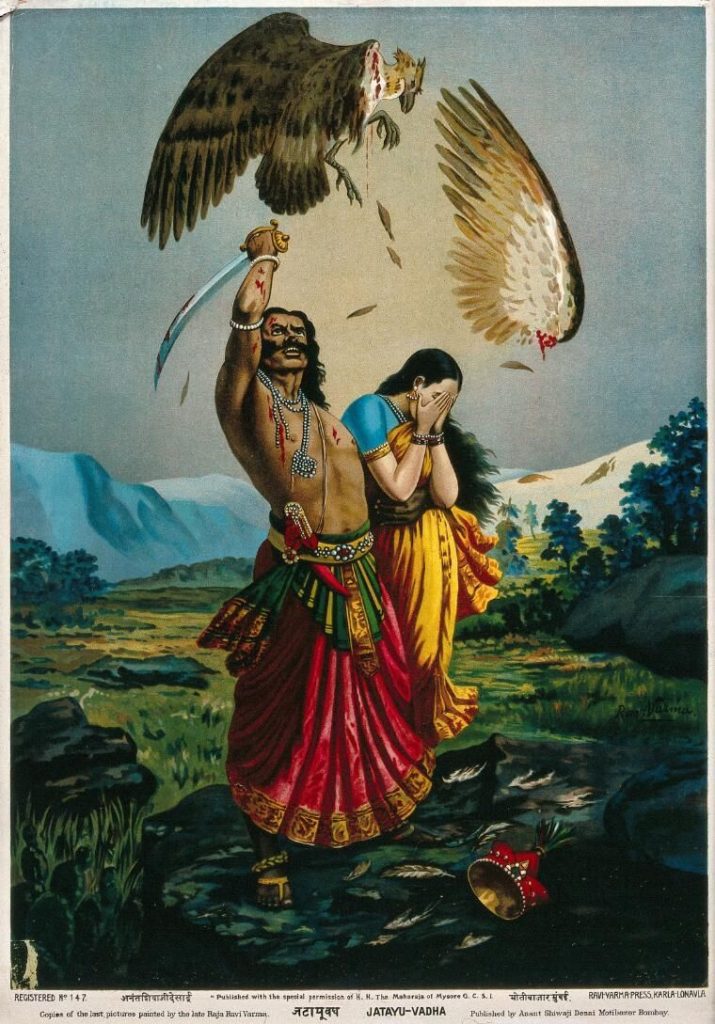
Ravana, the powerful Rakshasa (Demon like peoples) king of Lanka, heard about Sita’s beauty and resolved to make her his own.
He sent his rakshasa warrior Maricha to abduct Sita, who was alone at the time. Sita refused to go with Maricha and called out for Rama and Lakshmana, who were away at the time. Lakshmana later drew a protective line around the hut where Sita was staying, warning her not to cross it.
Read the Ramayana – see several options
Valmiki’s Ramayana: The Great Indian Epic (Amar Chitra Katha) – Illustrated Comics
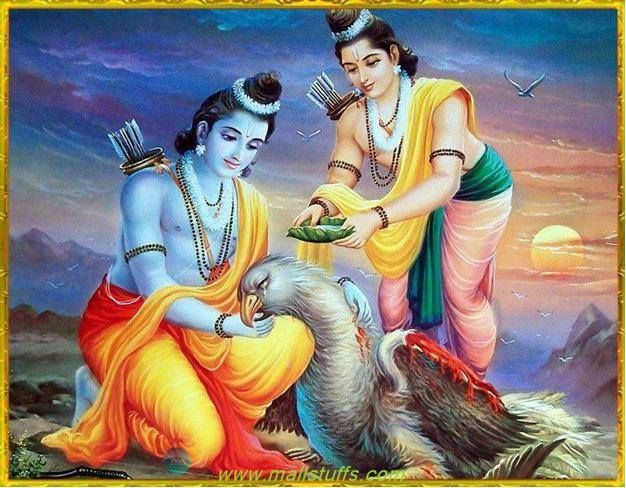
After discovering that Sita was missing, Rama and Lakshmana set out to find her.
They met Hanuman, the vanara (half human-half ape) warrior god, who pledged to help them in their quest.
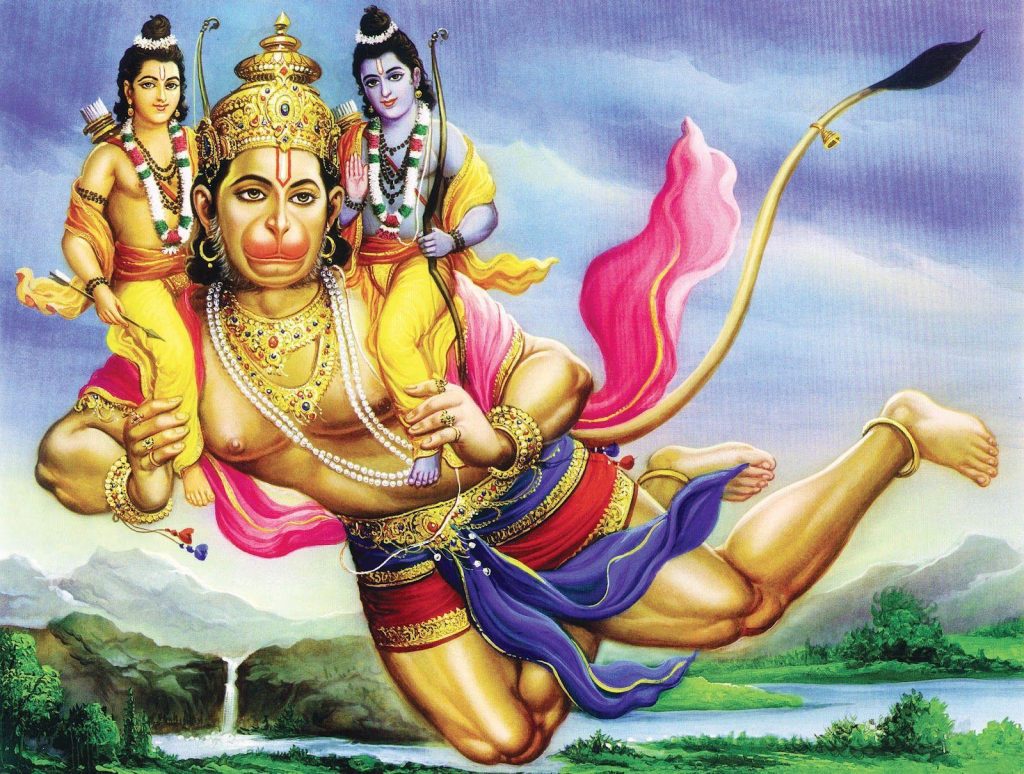
With Hanuman’s help, they eventually located Sita in Lanka.
Rama formed alliances with various Vanara armies, including the army of Sugriva, whom he helps defeat his brother Vali, and began to make preparations for an attack on Lanka.
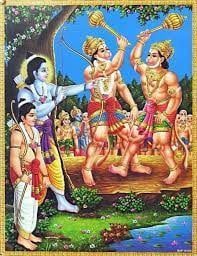
To reach Lanka, Rama’s army had to cross the sea. They sought the help of the god of the sea, Varuna, but he refused to aid them.
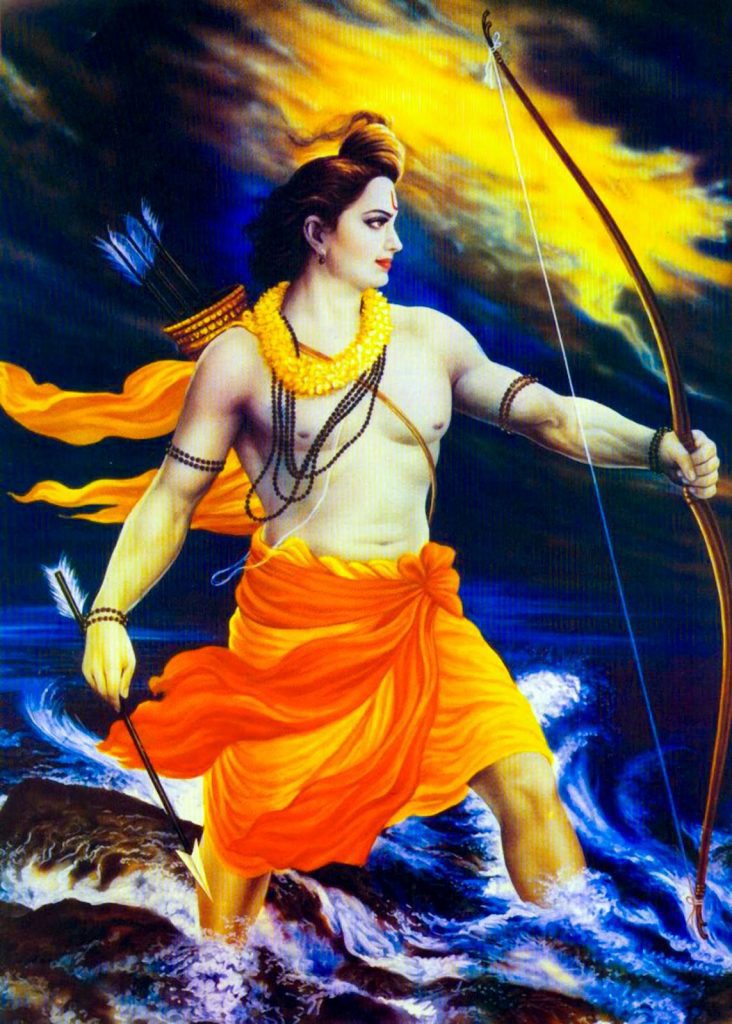
Undeterred, Rama and his army built a bridge across the sea with the help of the vanara army. They fought and defeated several rakshasas along the way.
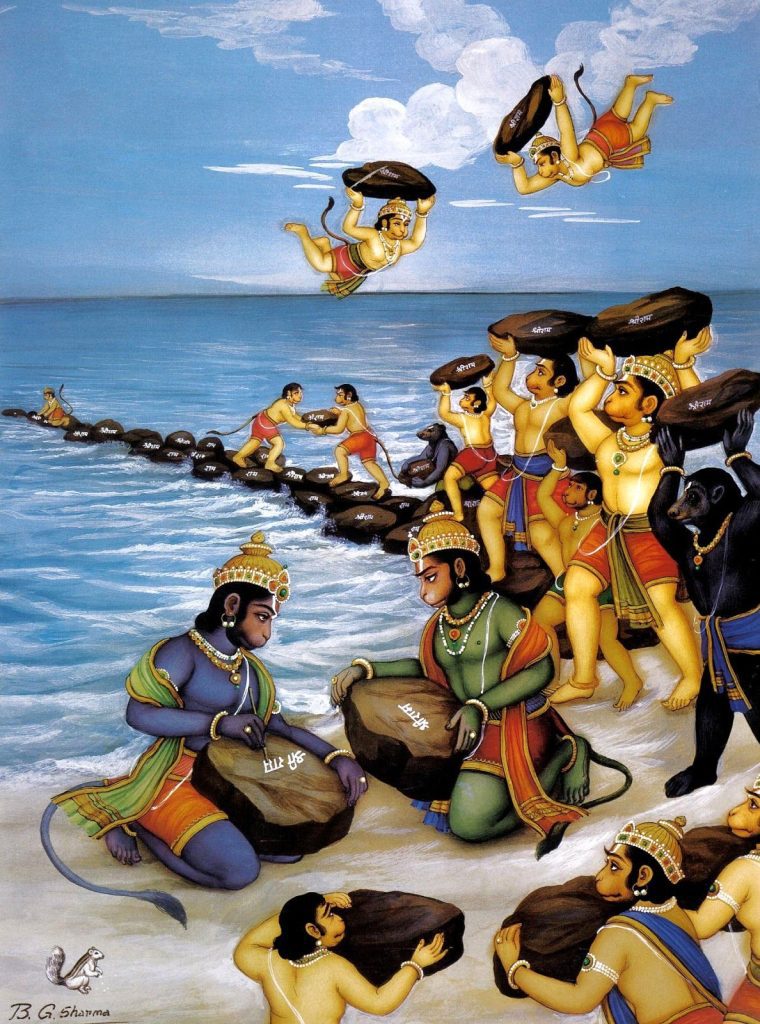
The war with Ravana’s army was long and bloody, with both sides suffering heavy losses. Ravana’s brother Vibhishana defected to Rama’s side, providing valuable intelligence about Ravana’s army.
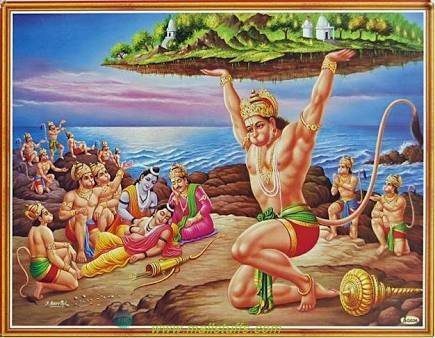
Lakshmana is mortally wounded by Ravana’s powerful son but Hanuman saves the day by bringing a whole mountain full of potent herbs to help save him. (More Details)
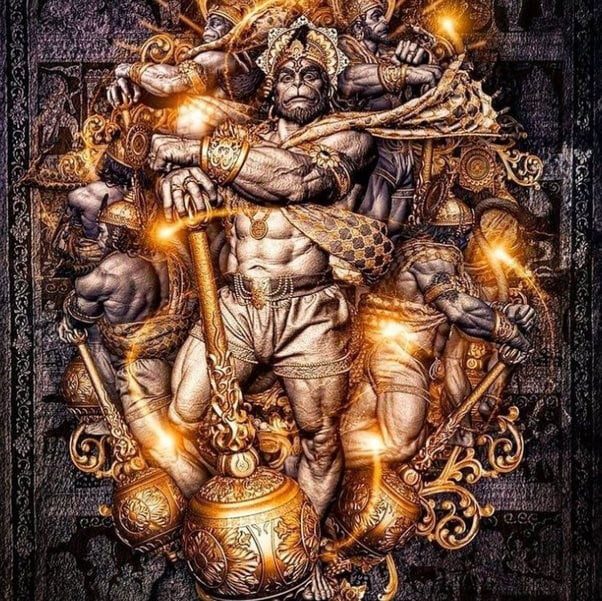
Rama’s loyal friend and servant, Hanuman, was also instrumental in the war, destroying several rakshasa warriors and killing Ravana’s son.
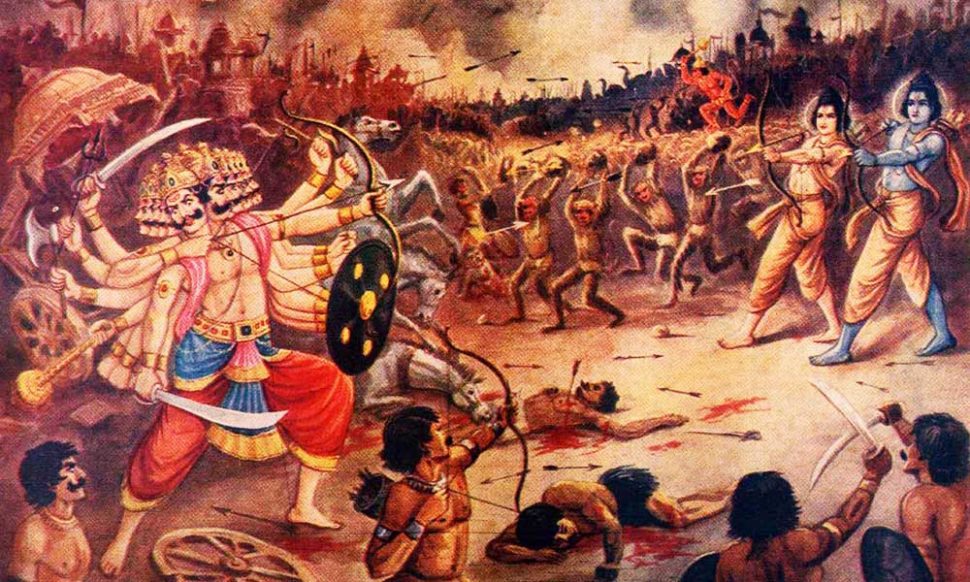
Rama and his army emerged victorious in the war, and Ravana was killed by Rama himself.
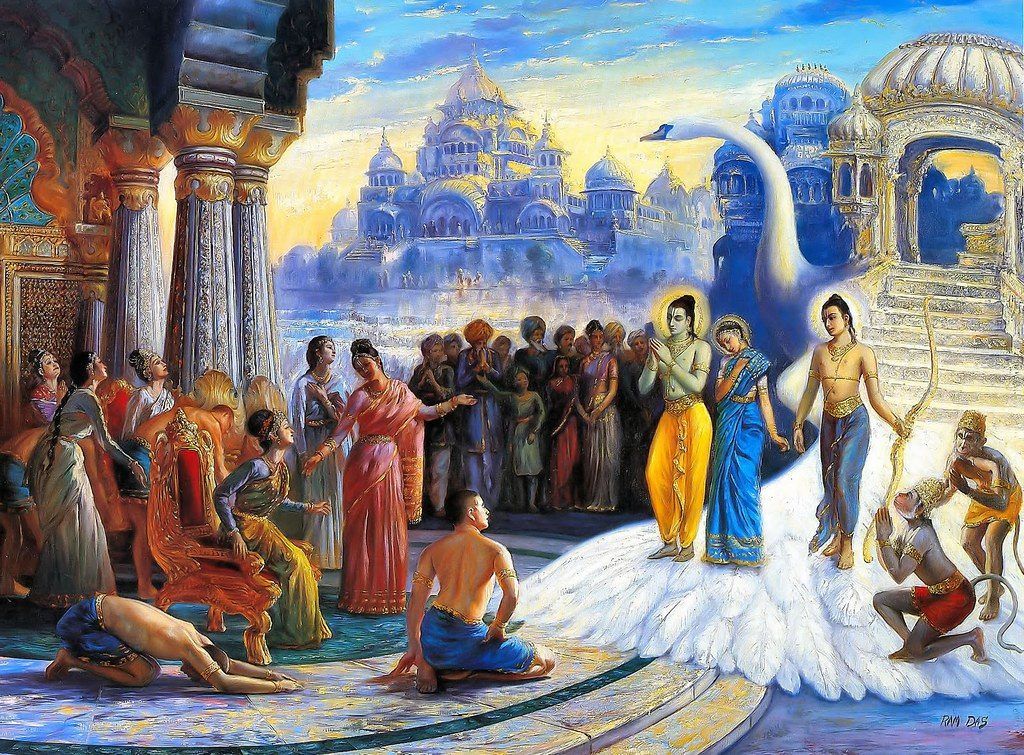
Rama and Sita were reunited, and they returned to Ayodhya on the pushpaka vimana, a flying chariot.
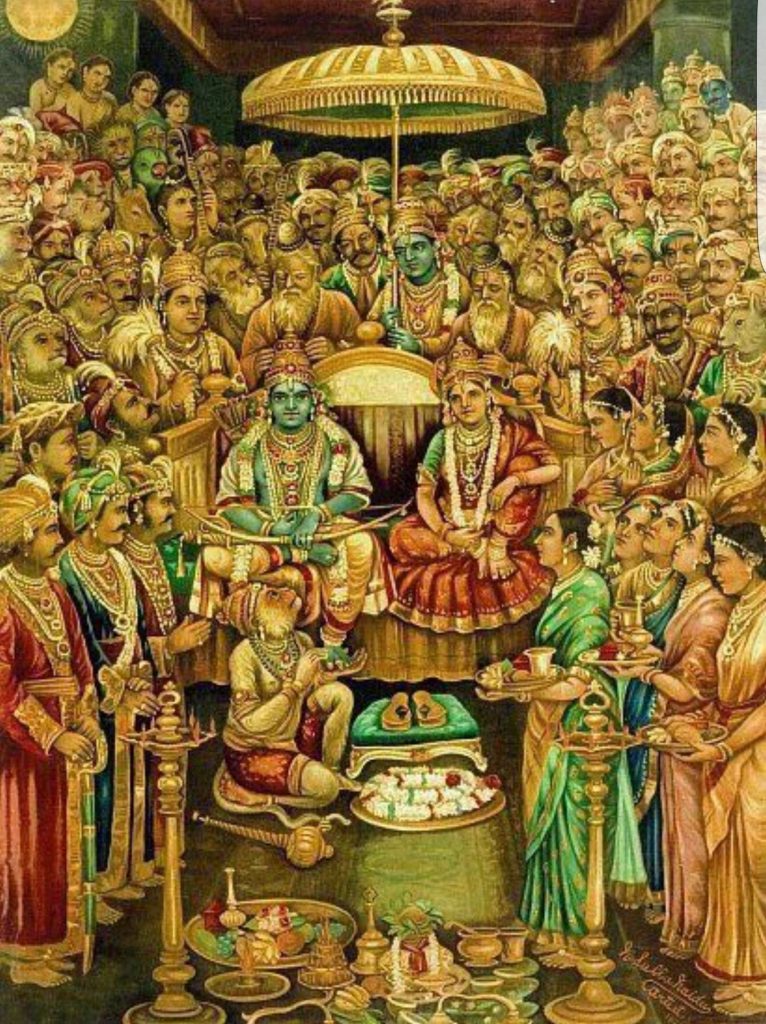
Rama was crowned king of Ayodhya, and he ruled his kingdom with compassion and wisdom, ensuring that all his subjects were happy and prosperous.
Why is Ramayana important?
Throughout the story, Rama and his companions face many challenges and obstacles, but they always stay true to their values of duty, loyalty, and compassion. They show forgiveness and mercy, even to their enemies, and they never give up on their quest to do what is right.
Rama is known for his virtues, such as his devotion to duty, his unwavering loyalty to his family and friends, and his courage in the face of adversity.
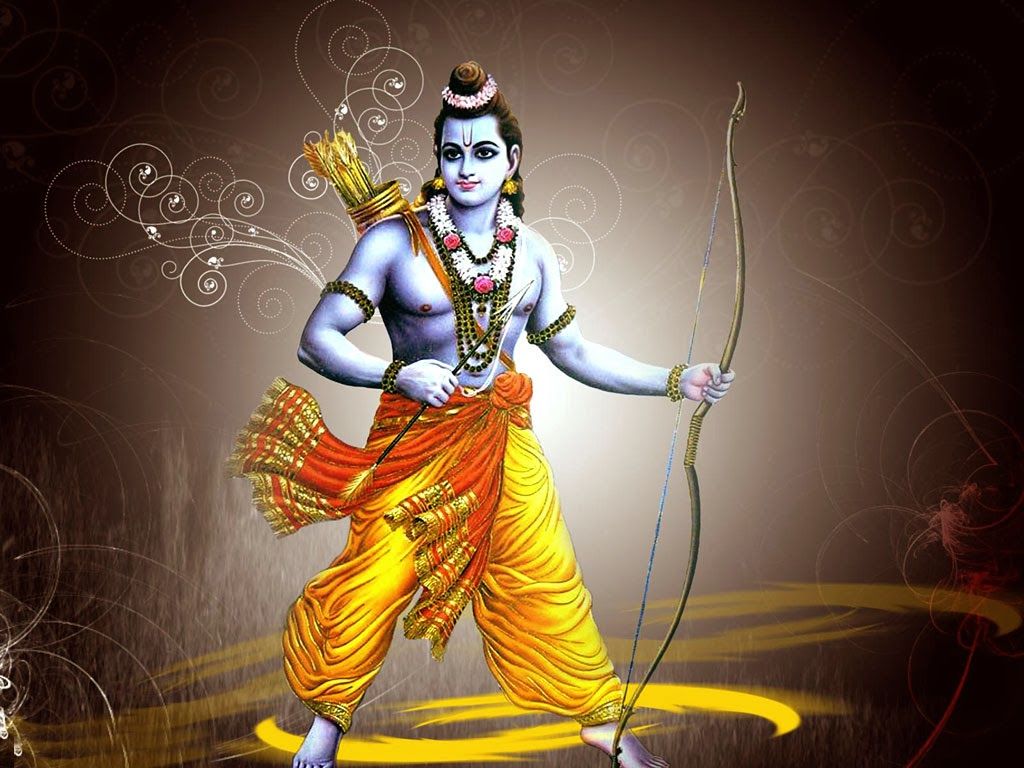
The story of Ramayana is a timeless tale that teaches us about the importance of virtues such as courage, kindness, and perseverance. It shows us that even in the face of great challenges, we can overcome them if we stay true to our values and never give up on what is important to us.
How old is this story of Rama?
The story of Ramayana is believed to have been first told in ancient India over 2,000 years ago, and it has since become one of the most famous and beloved stories in Indian culture. The story has been retold in various forms, including plays, movies, and television shows.
Why are Rama and Sita important?
Ramayana is considered an epic is because of the depth and complexity of its characters. Rama, for example, is not just a heroic figure but also a son, a husband, and a friend, and the story explores the various roles he plays in his life. Similarly, Sita is not just a damsel in distress but also a strong and independent woman who faces her challenges with grace and courage.
The story of Ramayana also teaches important moral lessons that are relevant even today. For example, it emphasizes the importance of family values, respect for elders, and loyalty to one’s loved ones. It also highlights the consequences of greed, envy, and arrogance, and how they can lead to one’s downfall.
In addition, the story teaches the importance of perseverance, as Rama and his companions face numerous obstacles and challenges on their journey, but they never give up and continue to work towards their goal. It also emphasizes the importance of forgiveness and compassion, as Rama forgives Ravana for his actions and shows him mercy even after defeating him in battle.
Learn about Sree Rama Navami a festival in celebration of Rama.
What are some Indian movies made on Ramayana?
In southern India the telugu film industry has perhaps the most movies made based on the epics Ramayana and Mahabharata. These not only focused on just the overall stories but also made movies focusing on or around particular events within the stories. No other industry has explored it as much as they have.
Here is one of the movies based on the entire Ramayana epic:
Here is another which focuses on what happens after the story above.
On TV however, there were a couple of series made on the Ramayana and Mahabharata which ran for more than a year. These have been dubbed into many languages and are quite popular in most Southeast Asian countries decades after they aired.
Where else is Ramayana popular?
The Ramayana, has had a significant impact on the culture and traditions of many countries outside of India, particularly in Southeast Asia.
In these countries, the Ramayana has been adapted into local languages and incorporated into various art forms such as theater, dance, and visual arts.
The story of the Ramayana is also reflected in local customs and traditions, including festivals, religious rituals, and even political events.
Here are some examples of how the Ramayana is important in countries other than India:
Indonesia:
The Ramayana has been a fundamental influence on the culture of Indonesia. In Indonesia, the epic is known as the “Ramayana,” and the story has been adapted into Javanese and Balinese languages.
One of the most prominent examples of the Ramayana’s influence on Indonesian culture is the wayang kulit, a traditional form of shadow puppetry that is popular throughout Indonesia. The wayang kulit often features scenes from the Ramayana, and the characters of Rama, Sita, and Hanuman are particularly beloved by audiences. The performances often serve as a way of transmitting moral and ethical values to younger generations.
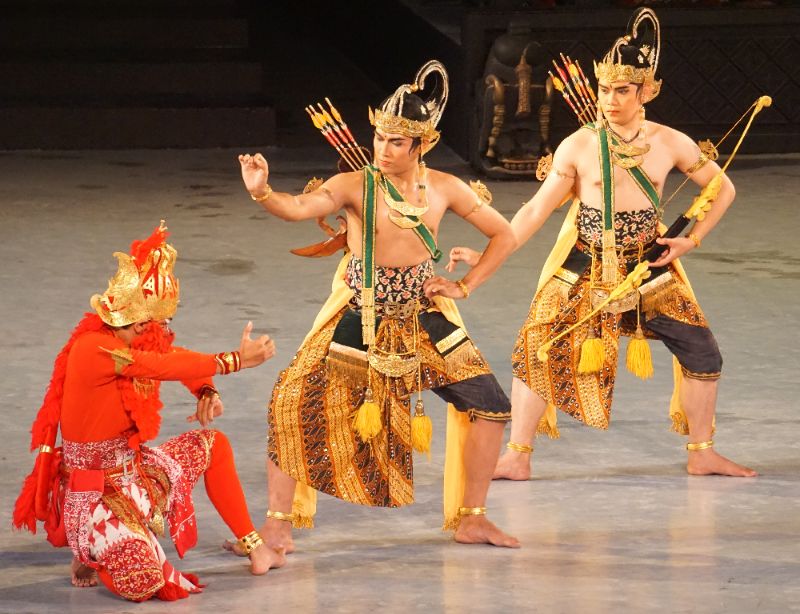
In addition to wayang kulit, the Ramayana has also influenced Indonesian dance, theater, and music. Many traditional Indonesian dances, such as the legong and the barong, feature characters and scenes from the Ramayana, while traditional Indonesian music often incorporates Indian instruments and styles.
The Ramayana has also had a significant impact on Indonesian literature, particularly in the epic poem the Ramayana Kakawin. This poem, which was written in the 9th century, tells the story of the Ramayana in Old Javanese and is considered one of the greatest works of Indonesian literature.
Cambodia:
The story of the Ramayana has been depicted in various forms of Cambodian art, including architecture, sculpture, and dance.
One of the most prominent examples of the Ramayana’s influence in Cambodia is the Angkor Wat temple complex, which was built in the early 12th century during the reign of King Suryavarman II.
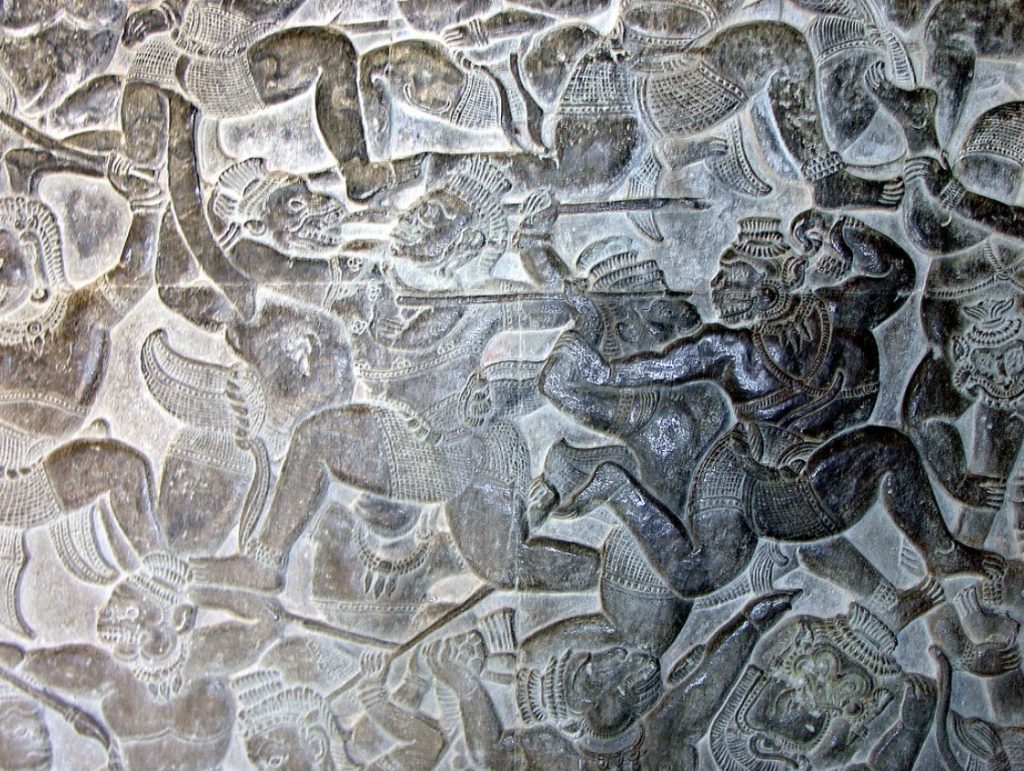
The temple’s bas-reliefs depict scenes from the Ramayana, including the battle between Rama and Ravana, as well as various other mythological and historical scenes. These reliefs are considered some of the finest examples of Khmer art and are a testament to the enduring influence of the Ramayana on Cambodian culture.
In addition to Angkor Wat, the Ramayana’s influence can also be seen in other Cambodian temples and religious sites, such as the Banteay Srei temple, which is known for its intricate carvings depicting scenes from the Ramayana.
The goddess Sita, who is Rama’s wife, is believed by some Cambodians to be the ancestor of the Khmer people.
Thailand:
The Ramayana has had a profound influence on Thai culture, and its influence can be seen in various aspects of Thai society, including its literature, arts, and religion. The Thai version of the Ramayana is known as the Ramakien and is considered one of the most important literary works in Thai culture.
The influence of the Ramayana can also be seen in the names of Thai kings, as many Thai monarchs have taken names from characters in the epic. For example, King Rama I, who founded the Chakri Dynasty and established Bangkok as the capital of Thailand, took his name from the protagonist of the Ramayana, Rama. Similarly, his successors were named Rama II, Rama III, and so on, until the present-day King Rama X.
The capital city of Thailand, originally known as Krung Thep, was also named after a city mentioned in the Ramayana. The full name of Bangkok is Krung Thep Maha Nakhon, which means “The City of Angels, Great City of Immortals,” a name inspired by the city of Ayodhya in the Ramayana, which is described as the city of gods.
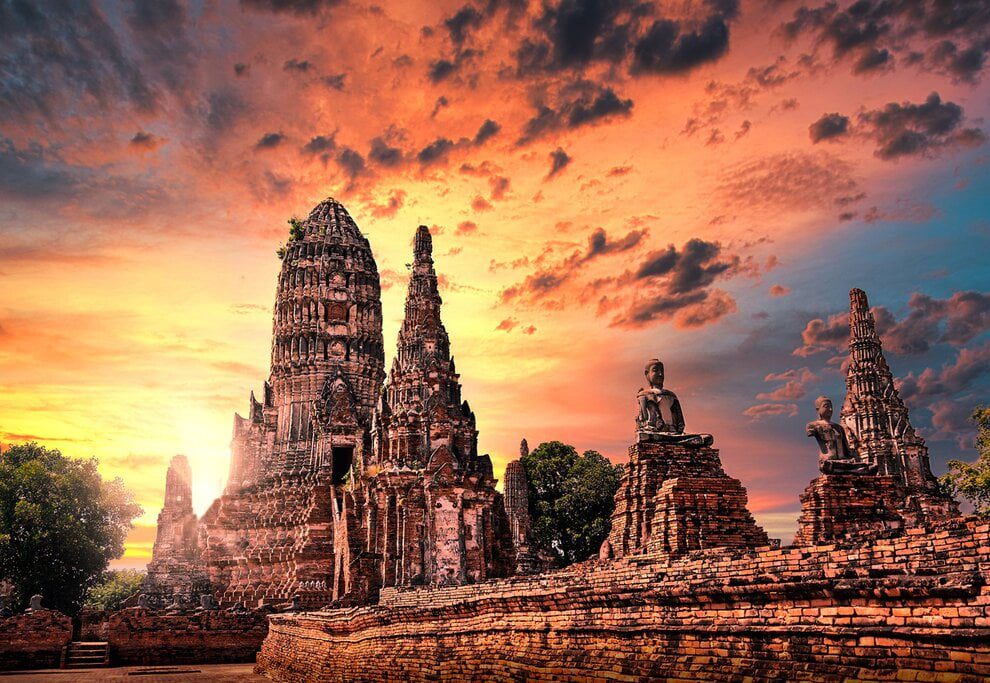
Ayutthaya, also known as Ayudhya, is a city located in central Thailand, about 80 kilometers north of Bangkok. The city was founded in 1350 and served as the capital of the Kingdom of Ayutthaya until it was sacked by the Burmese in 1767. The name Ayutthaya is derived from the Sanskrit term “Ayodhya,” which means “unconquerable” or “invincible.” In the Hindu epic, the Ramayana, Ayodhya is the birthplace of the hero Rama, and it is described as a prosperous and powerful city. The name was likely chosen for the city of Ayutthaya to symbolize its strength and resilience, and it served as a reminder of the city’s ancient heritage and cultural ties to India.
In addition to these examples, the Ramayana has had a significant impact on Thai art and culture. The epic has been adapted into various art forms, including Thai classical dance, music, literature, and drama. The story of the Ramayana is also often depicted in murals and sculptures in Thai temples and palaces.
Laos:
The Ramayana has influenced the Lao culture through local adaptations and translations of the epic. The story has been adapted into the Lao language, and various dance forms like the “Nang Sida” and “Nang Sangkhane” are based on the story of the Ramayana.
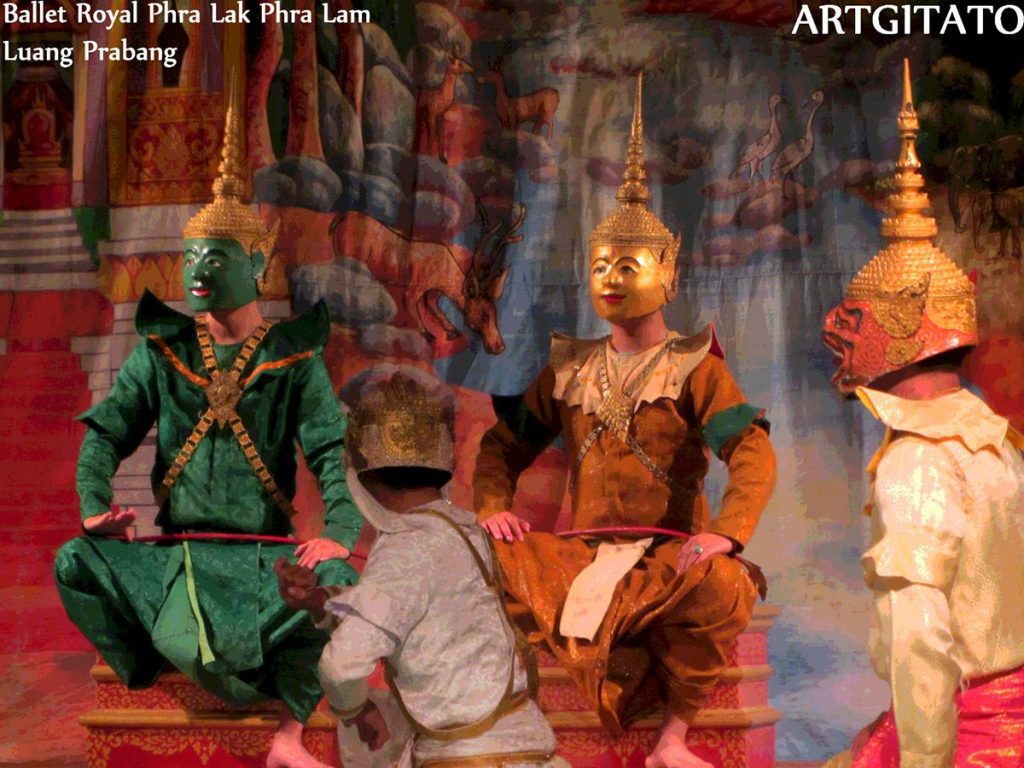
One of the most prominent examples of the Ramayana’s influence on Laotian culture is the Phra Lak Phra Lam, a Laotian version of the epic that tells the story of Rama and Sita in a uniquely Laotian context. The Phra Lak Phra Lam features a number of differences from the original Ramayana, including changes to the names of the characters and the addition of Laotian cultural elements.
In addition to the Phra Lak Phra Lam, the Ramayana has also influenced Laotian art and architecture. Many Laotian temples, particularly those in Luang Prabang, feature carvings and murals depicting scenes from the Ramayana, while traditional Laotian textiles often incorporate Ramayana motifs and designs.
The Ramayana has also played a significant role in Laotian religion, particularly in the practice of Theravada Buddhism. While Buddhism is the dominant religion in Laos, many Laotians also practice a form of animism that incorporates Hindu and Buddhist beliefs. The Ramayana serves as a central text in this syncretic tradition and is often used in religious rituals and ceremonies.
Finally, the Ramayana has also influenced Laotian literature, particularly in the form of the Jataka tales, a collection of stories that tell the past lives of the Buddha. Many of these stories draw on themes and characters from the Ramayana, illustrating the enduring influence of the epic on Laotian culture.
Myanmar:
The story of the Ramayana is also an important cultural influence in Myanmar.
One of the most prominent examples of the Ramayana’s influence on Myanmar culture is the Yama Zatdaw, a Myanmar version of the epic that tells the story of Rama and Sita in a uniquely Myanmar context.
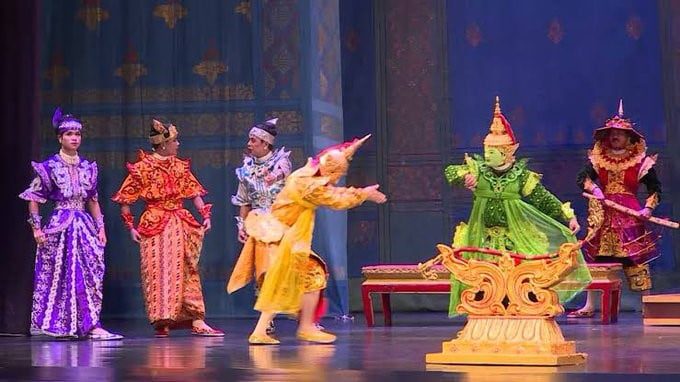
The Yama Zatdaw features a number of differences from the original Ramayana, including changes to the names of the characters and the addition of Myanmar cultural elements.
In addition to the Yama Zatdaw, the Ramayana has also influenced Myanmar art and architecture. Many Myanmar temples, particularly those in Bagan, feature carvings and murals depicting scenes from the Ramayana, while traditional Myanmar textiles often incorporate Ramayana motifs and designs.
Malaysia:
The Ramayana has had a significant influence on Malaysian culture, particularly in the areas of religion and performing arts.
One of the most prominent examples of the Ramayana’s influence on Malaysian culture is the annual celebration of Deepavali, also known as Diwali, which commemorates the return of Rama and Sita to Ayodhya after defeating the demon king Ravana. This festival is celebrated by Malaysians of Indian descent as well as Malaysians of other ethnicities, and is a national public holiday.
The Ramayana has also influenced Malaysian performing arts, particularly the traditional dance forms of mak yong and wayang kulit.
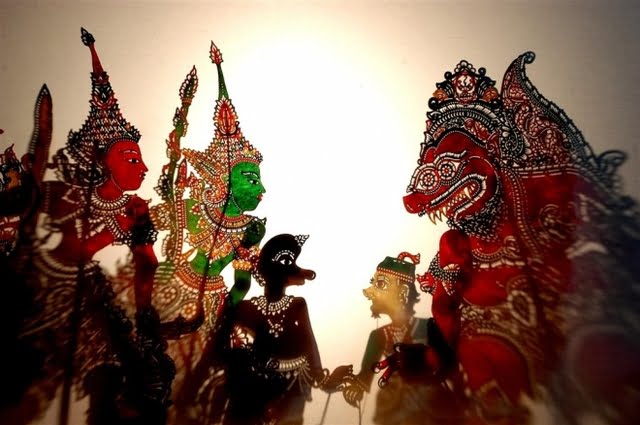
Mak yong, which originated in Kelantan, features characters and themes from the Ramayana, while wayang kulit, a shadow puppet theatre, often includes scenes from the epic.
In addition, the Ramayana has played a significant role in Malaysian literature, particularly in the Malay-language Hikayat Seri Rama, a retelling of the Ramayana in a Malay context. The Hikayat Seri Rama, which was written in the 15th century, features changes to the names of the characters and the addition of Malay cultural elements.
Overall, the Ramayana has had a significant impact on the culture and traditions of many countries outside of India, particularly in Southeast Asia. The epic has been adapted into various art forms and has influenced local customs and traditions, including festivals, religious rituals, and political events.
Here is another post with more information about Ramayana in southeast Asian countries.
Top image – Source
Disclaimer:
This is NOT an exhaustive excerpt. It takes days or weeks to go through the entire volume of work for this epic.
Each character has origin stories in great detail and those details help the reader or listener to understand the complexity of that character and their ultimate role in the entire story.
The above is a heavily summarized version and by no means should it be considered as an accurate representation. It is simply an attempt to introduce the epic to someone who has no idea of what this is all about.
